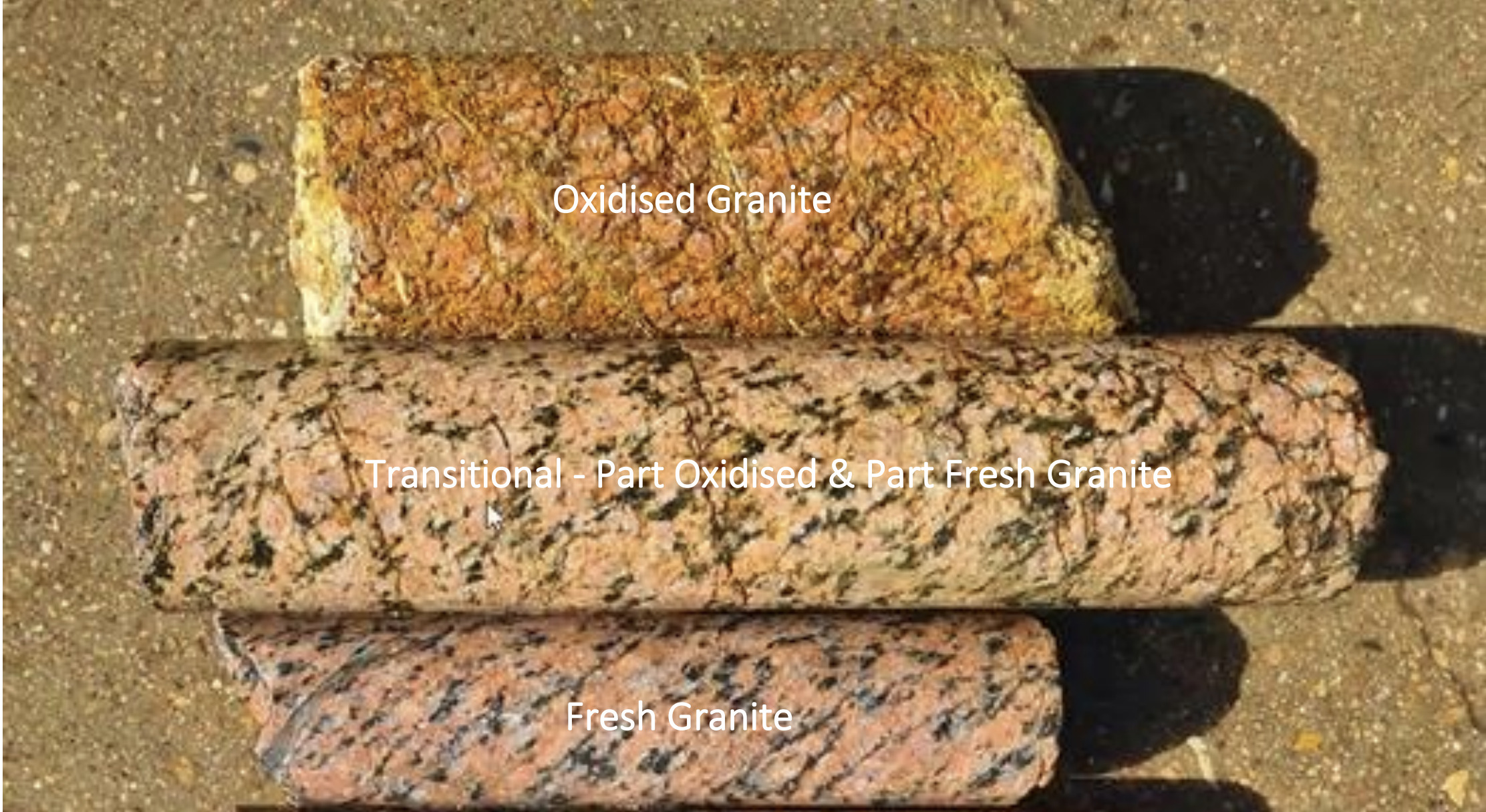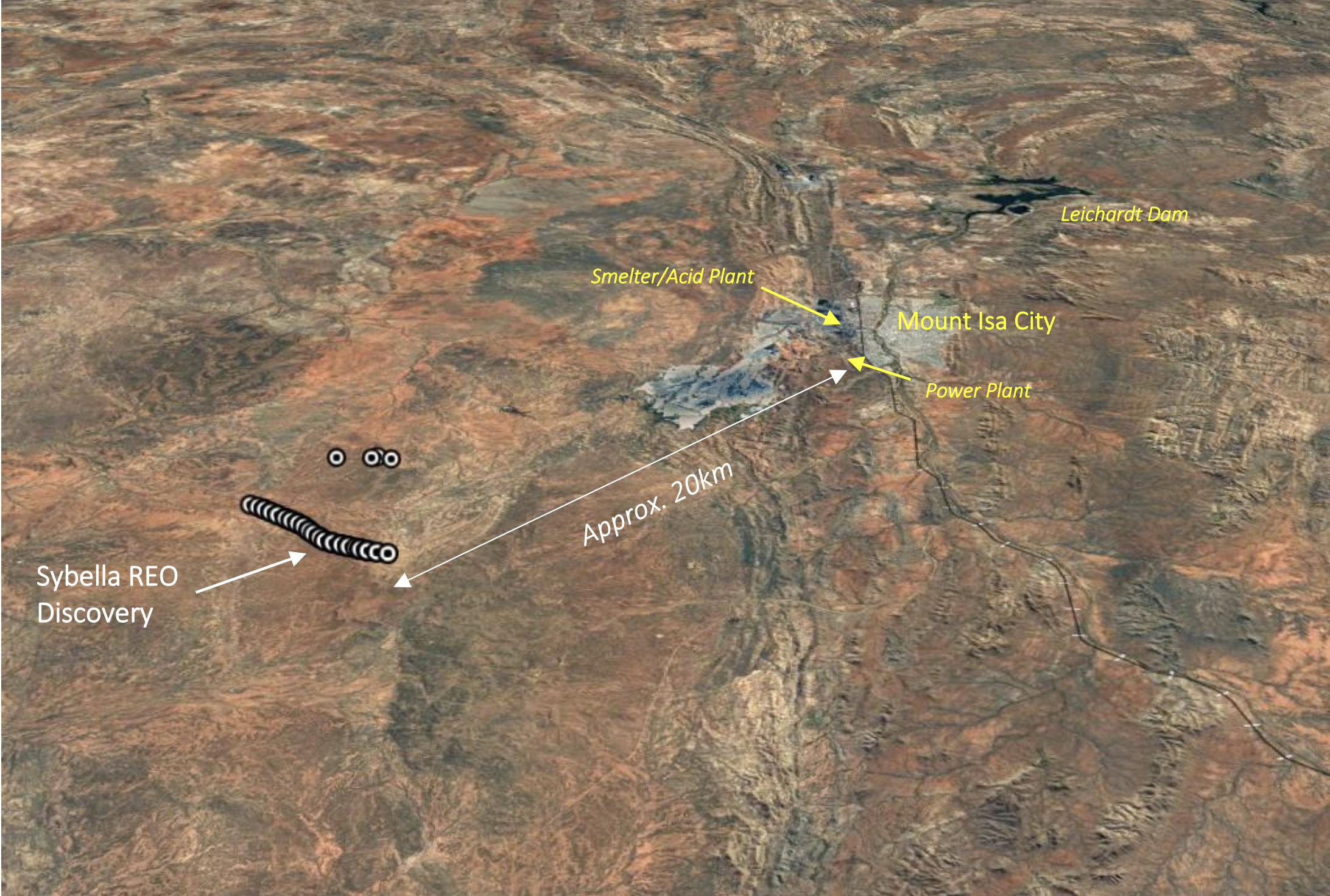Red Metal testing proves Sybella REO project is amenable to heap leaching
Mining
Mining
Special Report: Initial metallurgical testing has indicated that Red Metal’s new Sybella rare earths discovery in Queensland could be a heap leachable source of rare earth oxides with highly competitive capital and operating costs.
Sybella is 20km southwest of Mt Isa and was proven as a new rare earth oxide (REO) discovery in August 2023 after proof-of-concept drilling returned significant REO intersections from a unique, enriched granite intrusion.
Red Metal (ASX:RDM) noted then that the holes drilled across the granite at the Boundary Fence traverse highlighted the grade and substantial width of the new find, which is interpreted to host two mineralised zones each about 1,000m wide.
Widely-spaced holes at the Donkey Dam profile 4km to the north also highlighted similar long intercepts of REO mineralisation.
Valuable magnet rare earths such as neodymium, praseodymium, dysprosium, and terbium make up a significant part of the overall REO content, which is another huge plus.
The results led the company to declare it had made a shallow “world-first” REE discovery with scope for “vast tonnages of weak-acid soluble REO mineralisation hosted in low-acid consuming granite rock”.

RDM has now proven strong REO extraction with low levels of impurities can be achieved on coarse, non-pulverised RC drill chip samples using low levels of sulphuric acid at ambient temperatures.
Its Phase 1 metallurgical testing indicates that Sybella mineralisation can be produced using simple processing options that potentially involve heap leach methods.
Costs are also likely to be easily controlled due to the low level of acid use, the use of ambient temperatures (alleviating the need for heating) and being able to avoid the need for extensive crushing.
The intermittent bottle roll test returned average neodymium, praseodymium, terbium and dysprosium extraction levels of 78%, 79%, 48% and 44% respectively.
This also returned low levels of deleterious element extractions and a low average sulphuric acid consumption rate of 37 kg/t.
Importantly, the data suggests that further improvement in REO extractions along with reduction in acid consumption rate and impurity extraction rate can be achieved by increasing the particle size, increasing the residence time, optimising the leach pH and focusing exploration on the better performing Boundary Fence East area.
A seismic refraction trial surveyed along the Boundary Fence traverse has resulted in the interpretation of weathered granite rock that hosts the shallow mineralisation to about 20m below surface.
This softer near-surface material would be potentially “rippable” – capable of being mechanically broken down with no blasting required – offering significant mining and comminution cost advantages.
“These breakthrough metallurgical results have far exceeded our expectations and underlined the potential for heap leachable REO ore at Sybella,” RDM managing director Rob Rutherford said.
“The Sybella results, as received to date, have been reviewed against peer projects using publicly available leach data and can be compared favourably to the recent exciting Brazilian discoveries. The metallurgical work has indicated opportunities to further enhance these recovery results and Red Metal will accelerate its exploration programs.
“Sybella has many of the attributes of the clay-hosted ionic deposits, but without the clay content which can cause problems and added costs in processing.
“This provides Red Metal with the confidence that a highly competitive project could be developed with low capital and low operating costs.”

Phase 2 metallurgical research involving comminution tests and size fraction leach tests on crushed core samples and impurity removal trials are currently in progress.
Impurity extraction test work is also being trialled. Results from this research are expected during the first quarter of 2024 and will better simulate a heap leach setting and provide more optimised data for a preliminary economic model.
RDM is also preparing to carry out step-out drilling along the 12km by 3km granite body.
This article was developed in collaboration with Red Metal, a Stockhead advertiser at the time of publishing.
This article does not constitute financial product advice. You should consider obtaining independent advice before making any financial decisions.